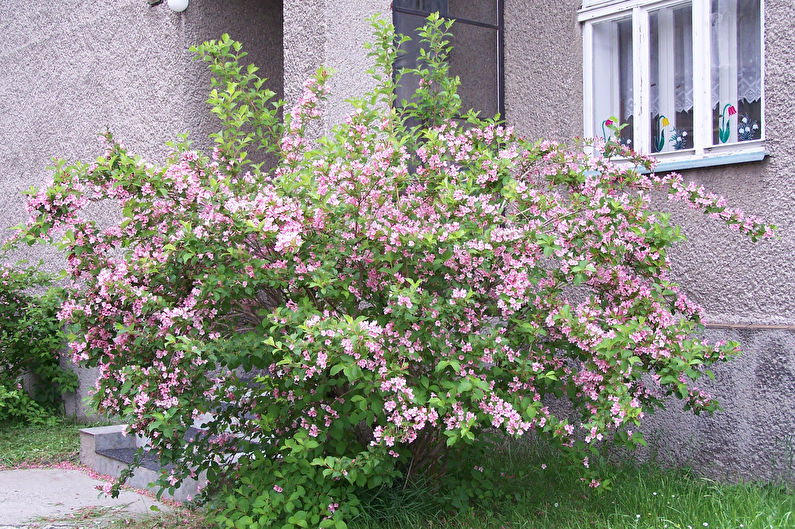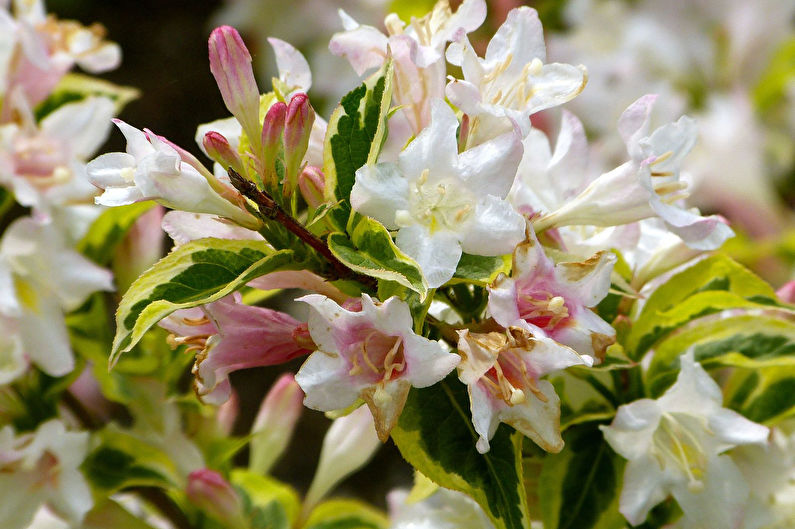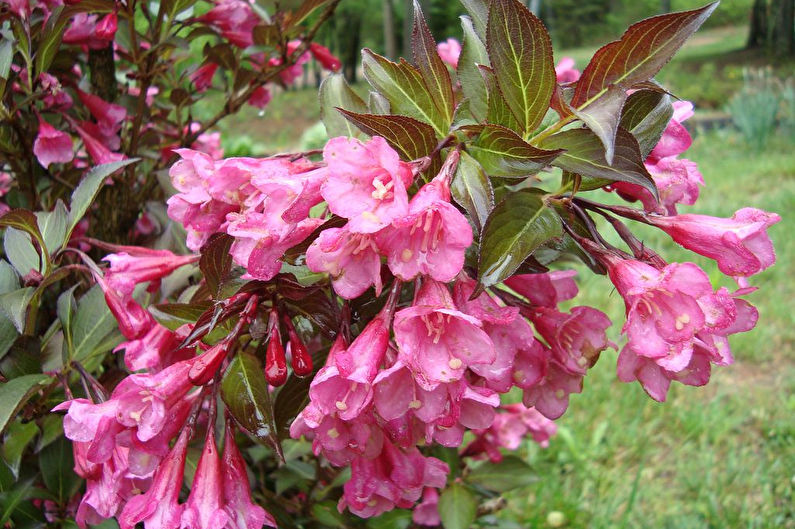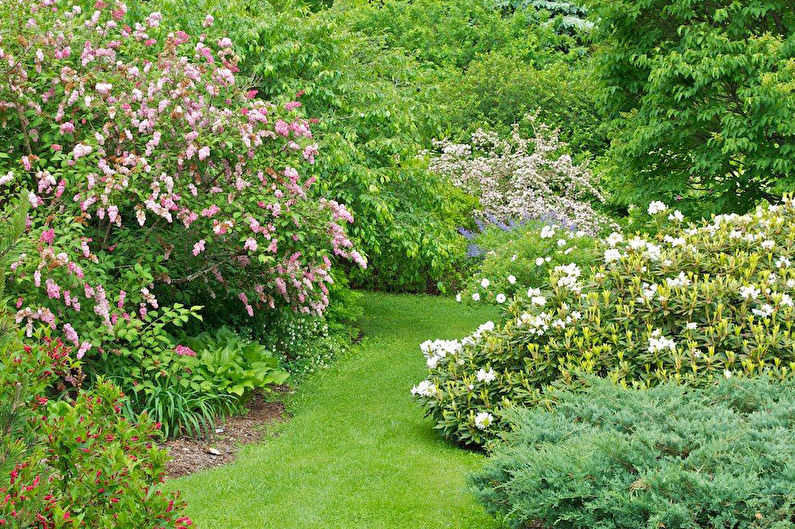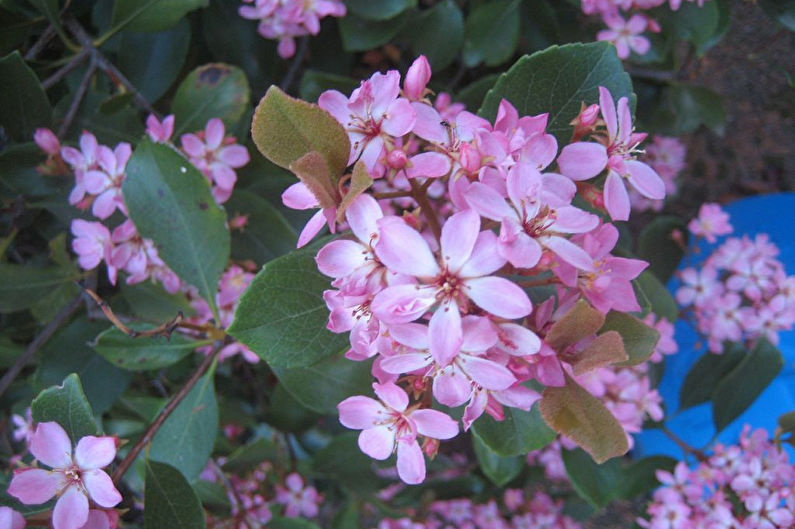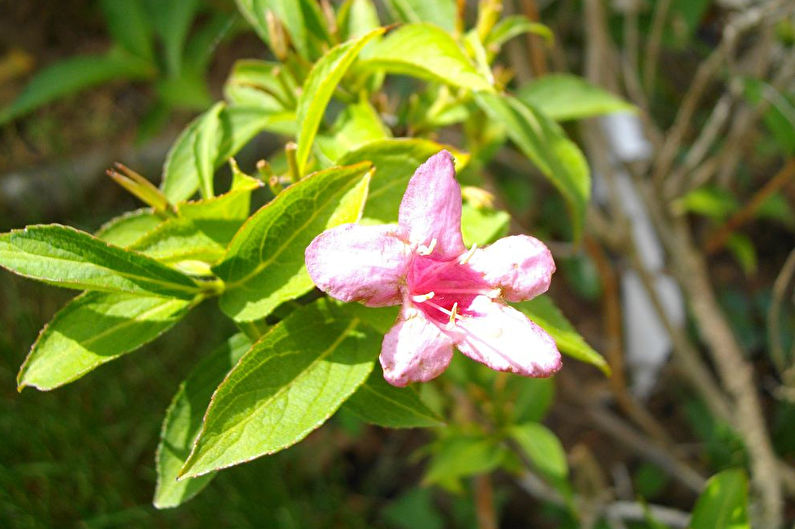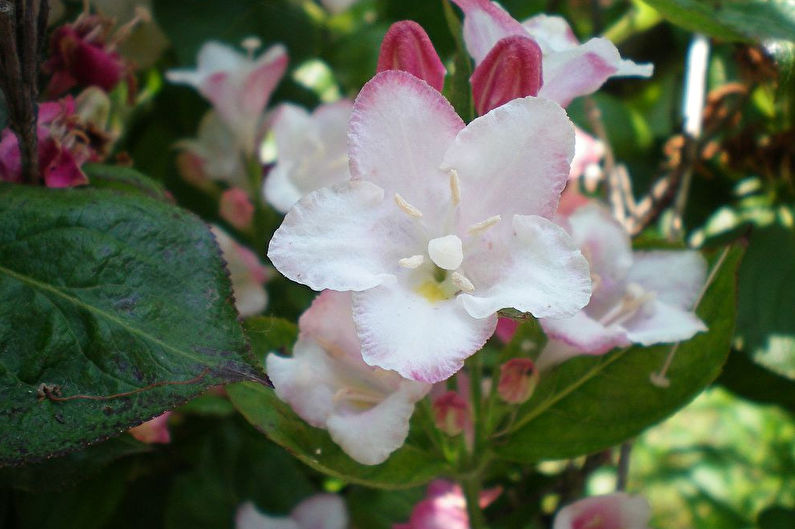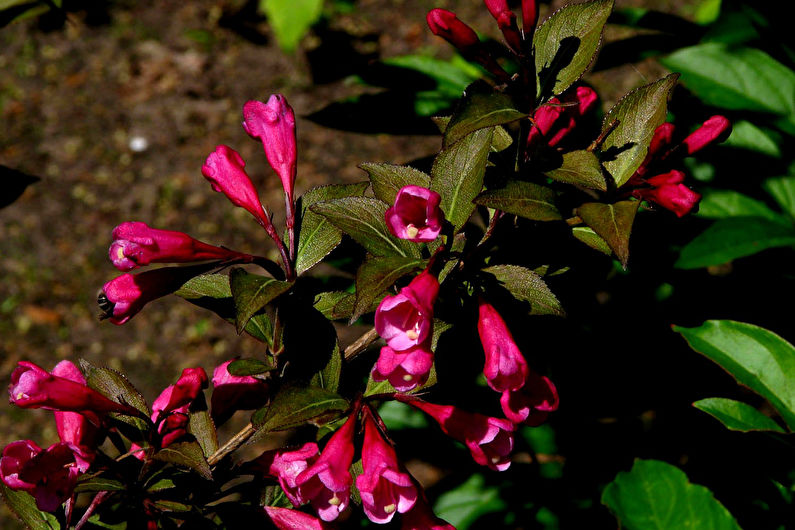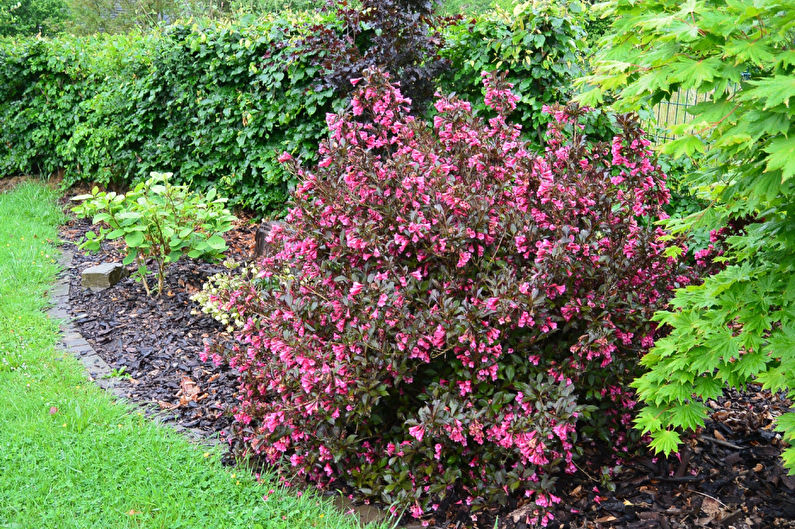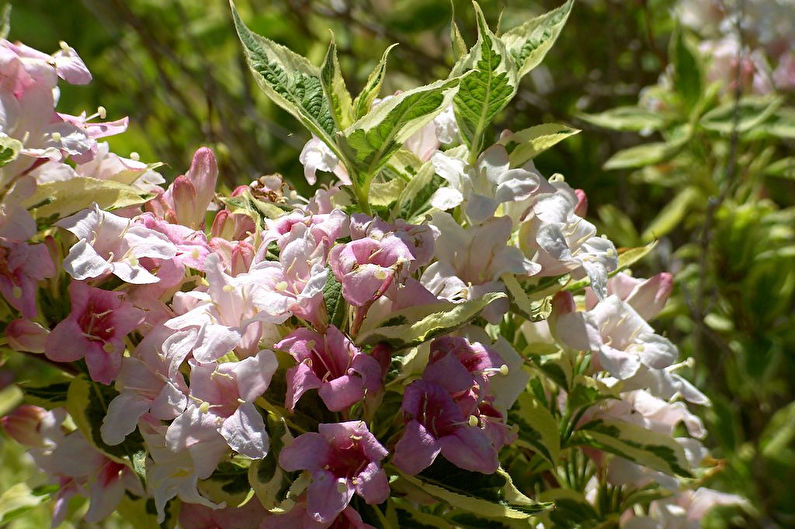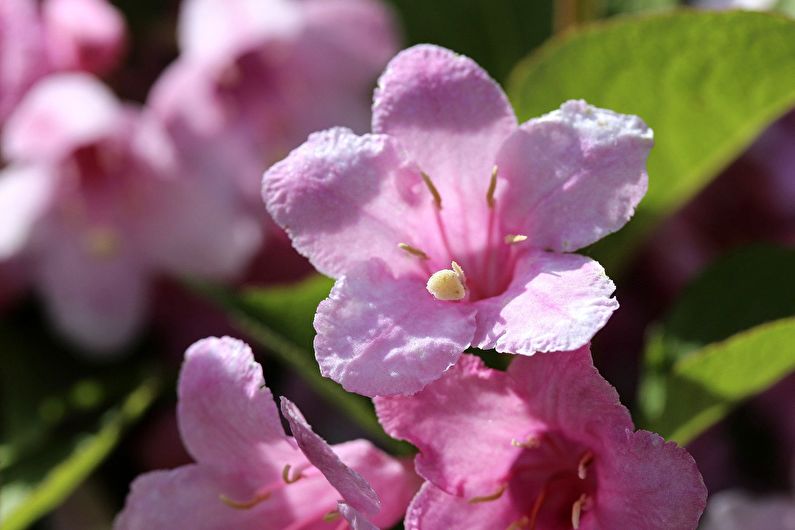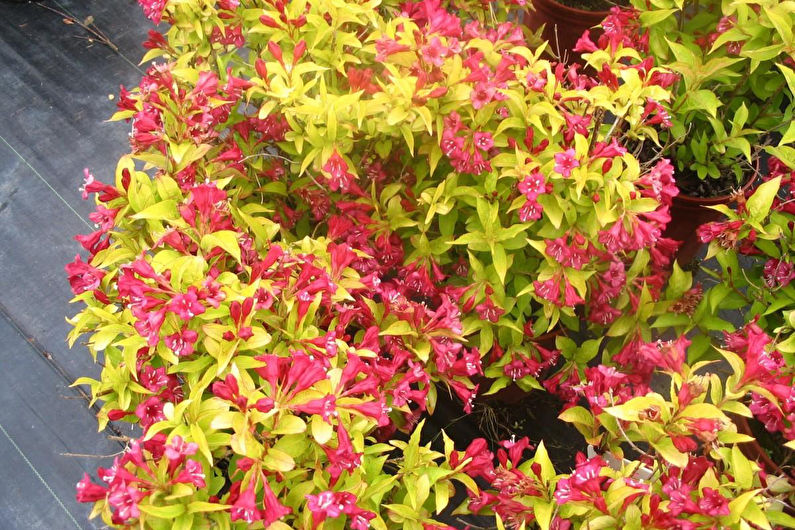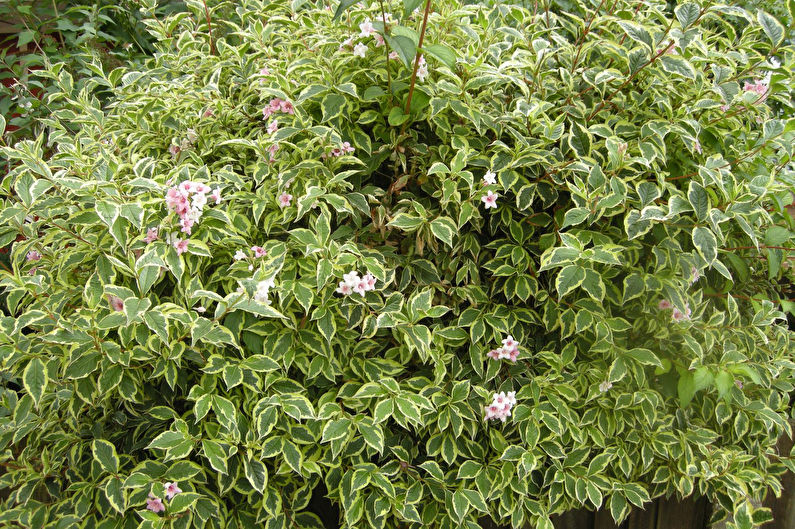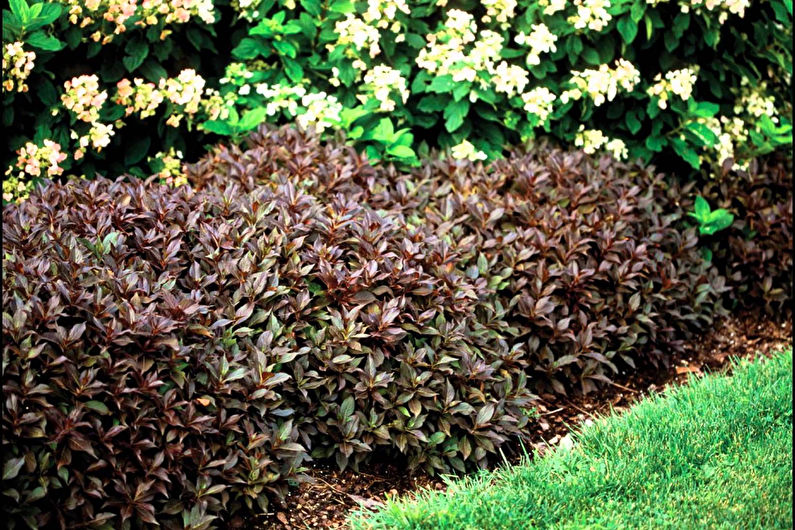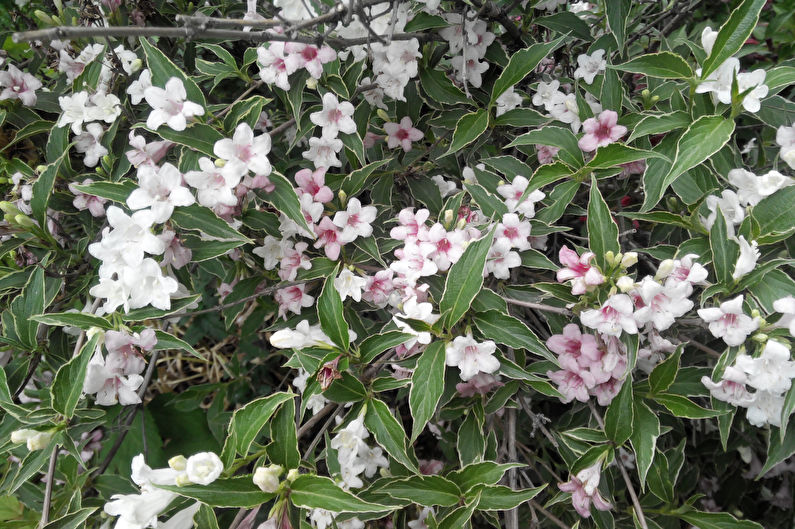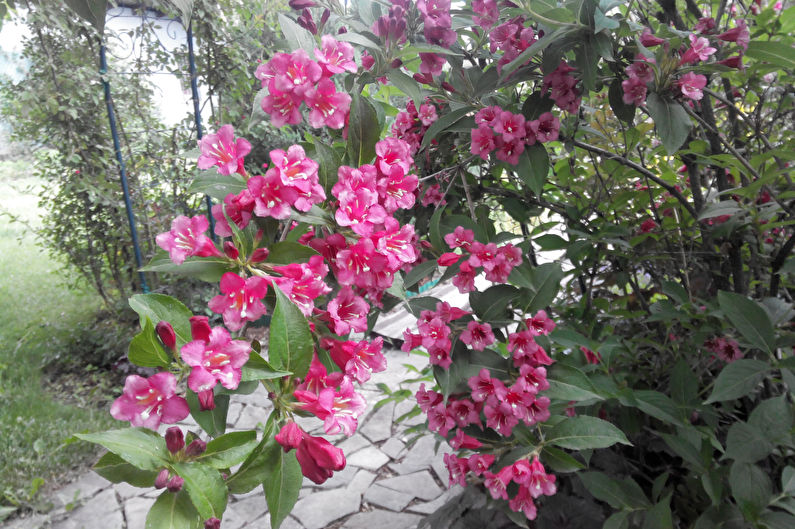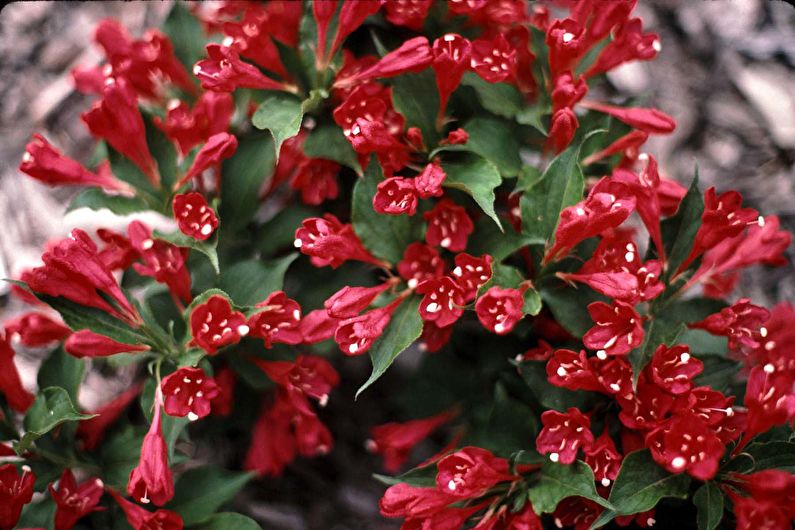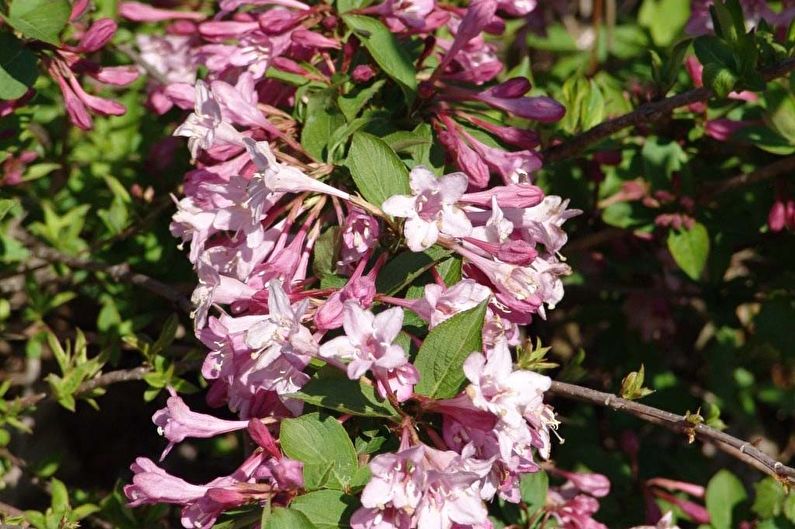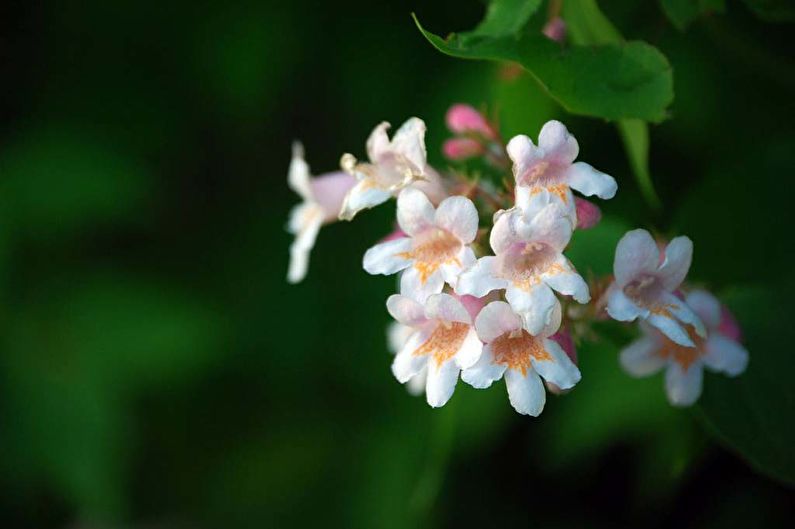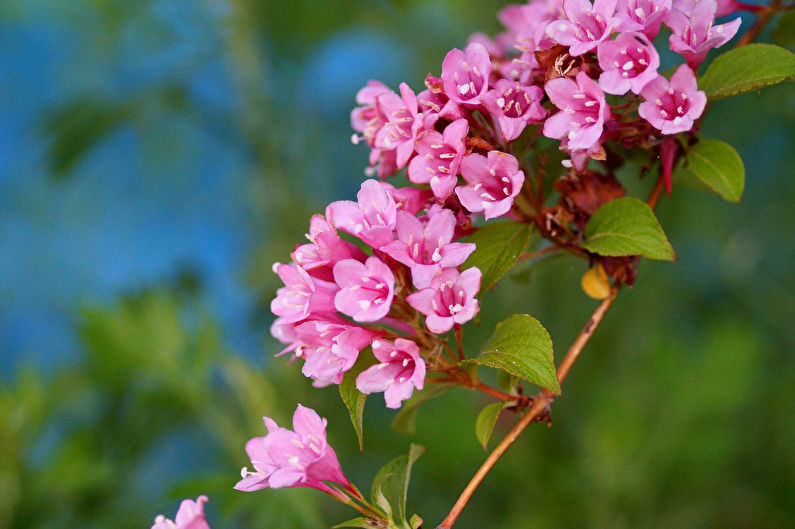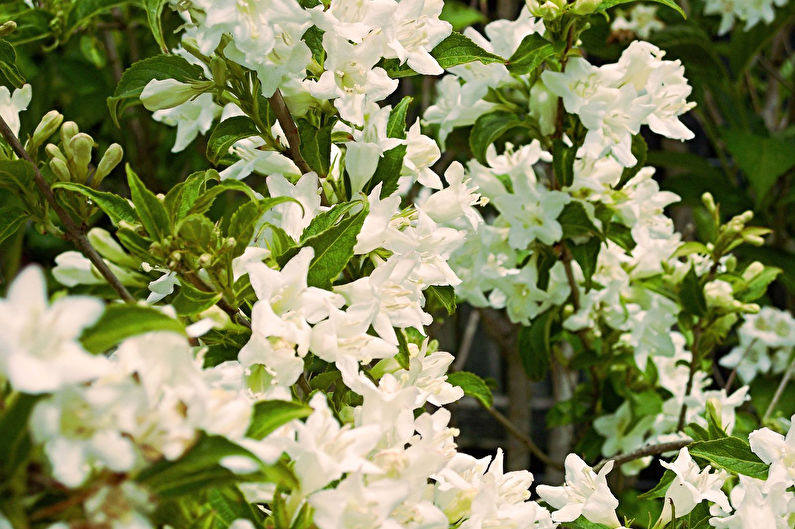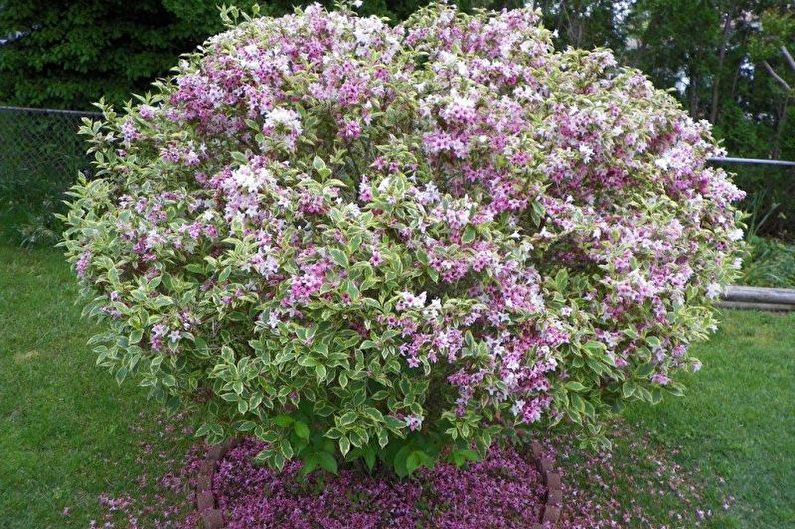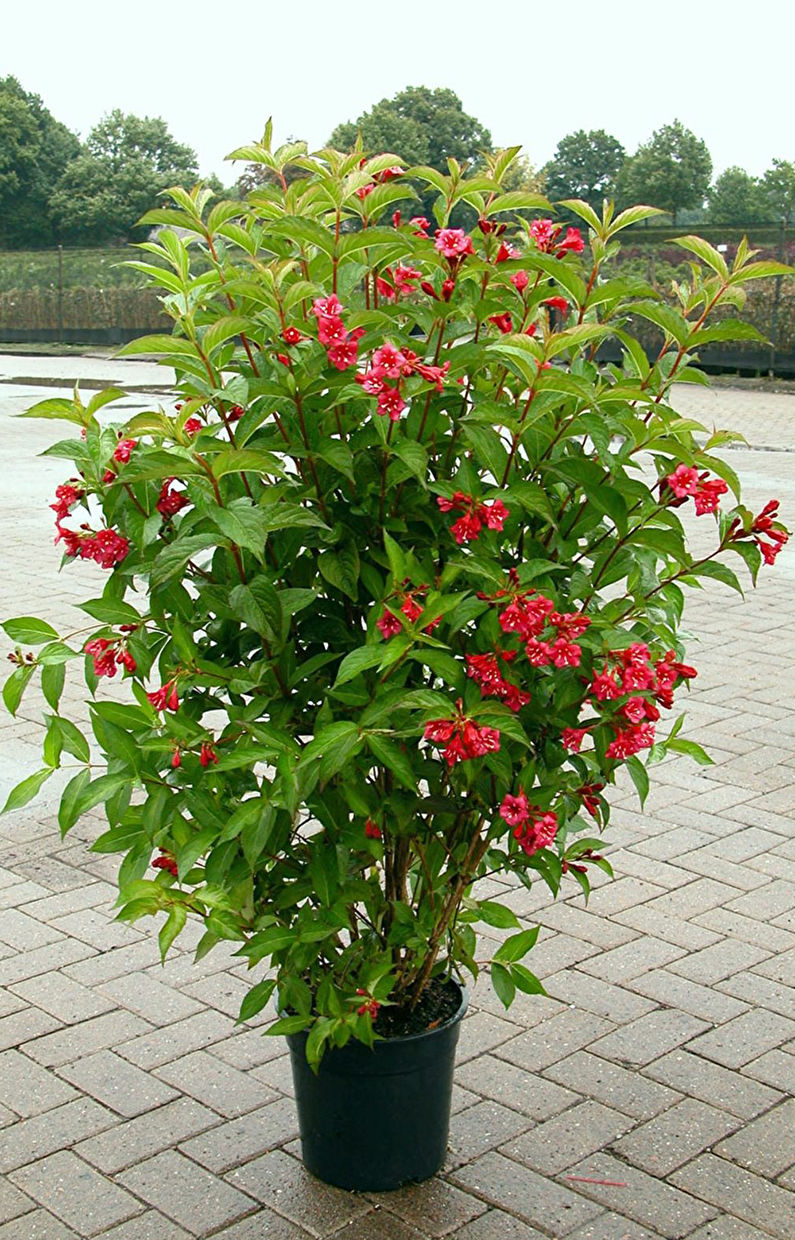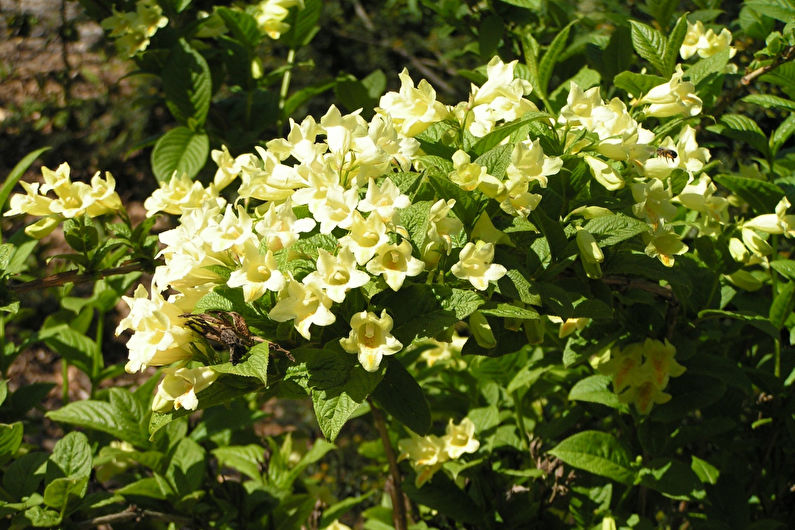
In the design of personal plots, parks, flower beds, flowering plants are widely used, among which weigela occupies a special place. Its bushes, abundantly strewn with bright pink, red, lilac, yellow or white bells, create a cozy and festive atmosphere around. Flowering occurs in late May - early June and lasts 3-4 weeks. Some varieties in a favorable climate re-bloom in the fall. At this time, weigela becomes a real decoration of the landscape.
Description and Features
The natural habitat of the Weigela is the Far East of Russia, China and Japan. In total, there are up to 15 species of this plant. This ornamental shrub belongs to the family Honeysuckle. It can reach 2-3 meters in height, crown diameter - up to 3.5 meters.
Weigela has a leafy leaf of a dark green color, sometimes with a red border. Like most deciduous plants, they appear after the flowering stage is completed. The color of the inflorescences depends on the variety, in addition, their hue can change during the season - from light at the beginning to more saturated at the end.
There are a lot of flowers on the weigel, due to which the bush looks unusually attractive. As a rule, these are small (4-5 cm) five-petalled bells, both collected in inflorescences, and single. Without smell. Because of their lightness, they quickly crumble in windy weather, so it is advisable for weigels to choose a place protected from drafts.

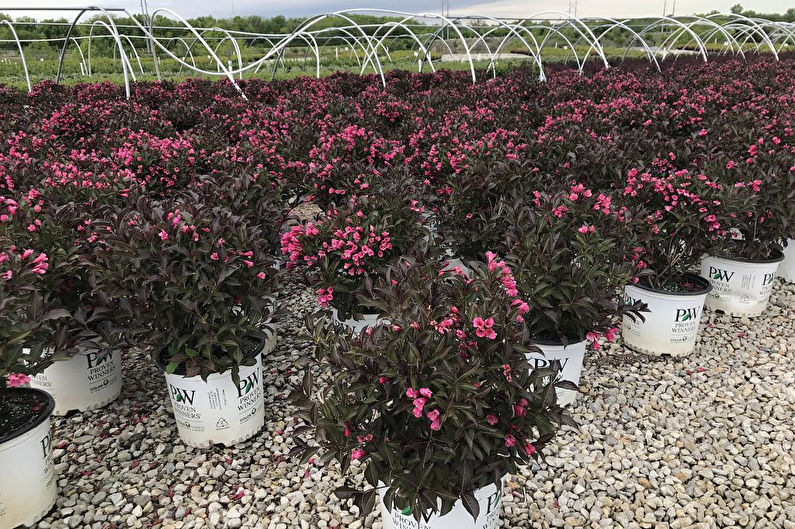
Types of Weigels
Being a heat-loving plant, Weigela tolerates frosts quite poorly. For this reason, most of its varieties are grown in greenhouses and conservatories. But, nevertheless, several species of shrubs adapt well to temperate continental conditions. In particular, these include the Far Eastern and some hybrids.
Weigela early (Weigela praecox)
It grows to about 2 meters. It is resistant to cold, is found in the wild in the stony slopes of the Ussuri Territory, in North Korea and China. Weigel early can be easily recognized by large brushes of hanging bright pink and reddish-purple flowers, which can be observed for as long as 30 days.
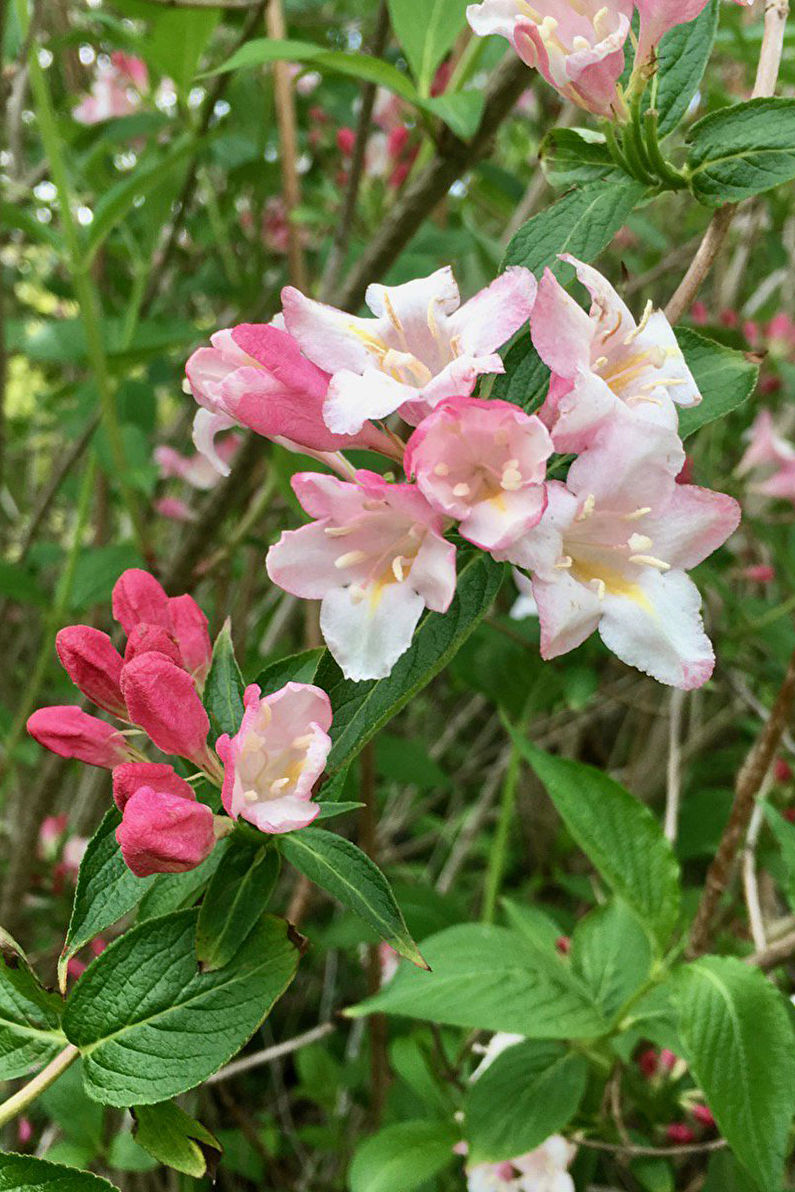
Weigela pleasant (Weigela suavis)
A low-growing species, reaching a height of only 1.5 m. It acquired its name thanks to unusual flowers - funnel-shaped bells up to 6 cm long, with a velvety surface and gradient transitions of shades (white-pink, red-violet, lilac-cream).
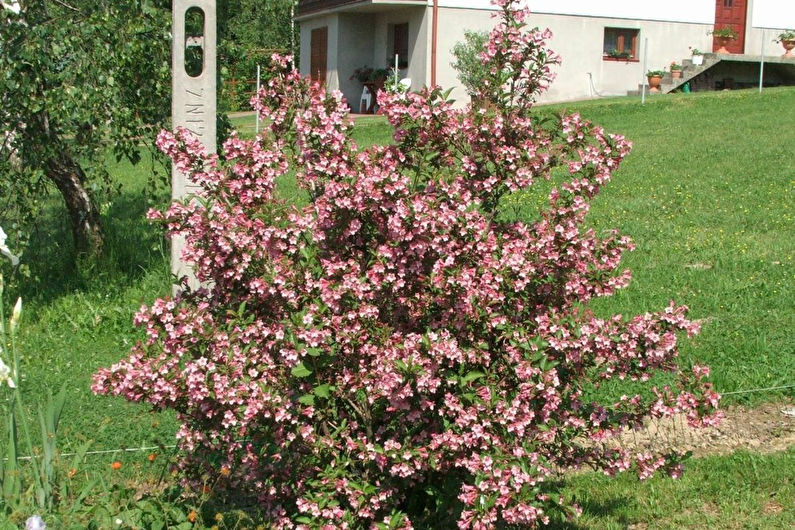
Weigela Middendorff (Weigela middendorffiana)
It differs in large creamy yellow flowers, the petals of which are as if illuminated from the inside by bright orange spots. This species usually blooms twice - in May and September. The bush itself forms a proportional crown, due to which it looks attractive both individually and in combination with other plants.
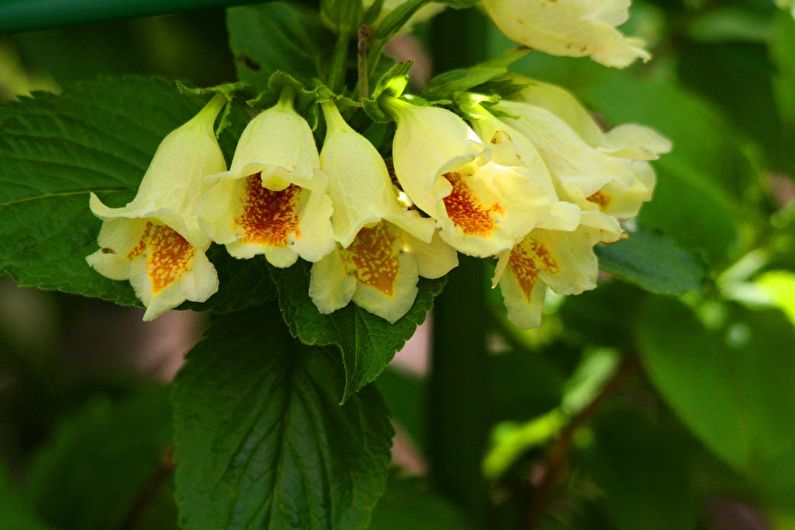
Blooming Weigela (Weigela florida)
The general name of hybrids. This category includes large 3-meter bushes of various shades, and dwarf bushes that can be used to decorate balconies, greenhouses or alpine slides. The main advantage of flowering hybrids in comparison with wild-growing species of weigela is a more saturated color of flowers, a wide variety of palettes, and hence increased decorativeness.
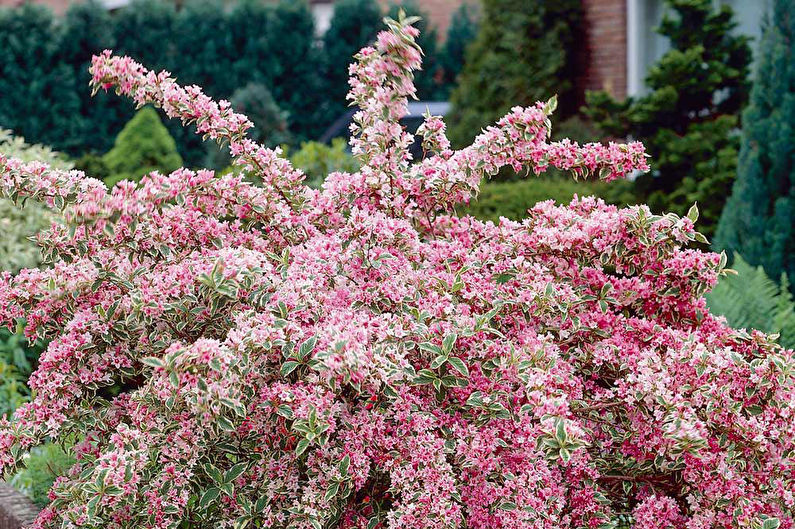
Weigela planting
Weigel should be planted in open ground in early spring, when buds begin to swell on fruit trees, and there is no risk of frost. It is best to choose three-year-old seedlings - they adapt better to cold weather, while young plants can die in the first winter.
The key to long and beautiful flowering is a good place to plant.For the wiegels, areas on the south side, sunlit and reliably protected from the winds, are ideal.
The soil should be loose, easily absorbing moisture. Heavy clay soils, chernozems, peat bogs are recommended to be mixed with sand and turf. The size of the pit depends on the root system of the seedling; for a standard plant, a depth of 40-50 cm will be sufficient. About 15 cm of drainage layer (gravel, expanded clay, broken brick) should be poured into the bottom of the pit, and then light soil with fertilizers (a compost bucket) and 100 g nitrofoski under one bush).
The treatment of roots with growth stimulants will help speed up the survival process of weigela. When planting, the root neck of the seedling should be level with the ground, which should be well tamped and watered. So that the soil does not dry out, it should be mulched with sawdust, straw or other improvised materials.
The distance between tall bushes should be at least 2.5 meters, dwarf varieties can be placed with an interval of 80 cm.

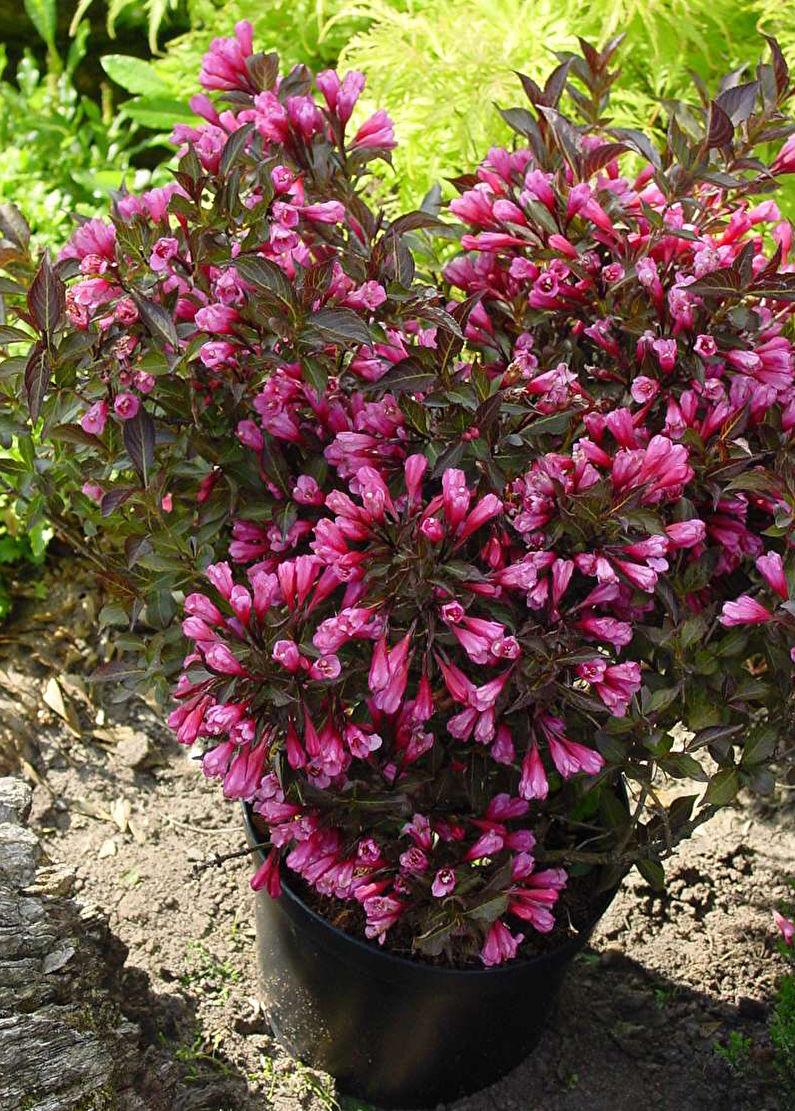
How to care for Weigela
Despite the poor tolerance of frost and wind, on the whole weigel is a rather unpretentious plant. It is enough to moisten regularly and pay attention to the shrub from time to time, and he will fully thank the owners with plentiful, long flowering.
Temperature
In a temperate climate, weigel does not require a special temperature regime - it develops well in the open air, like other decorative bushes. The optimal conditions during the flowering season are 18-21 C. It is advisable only to prevent freezing of the roots and trunks of young plants in winter, otherwise they may die.
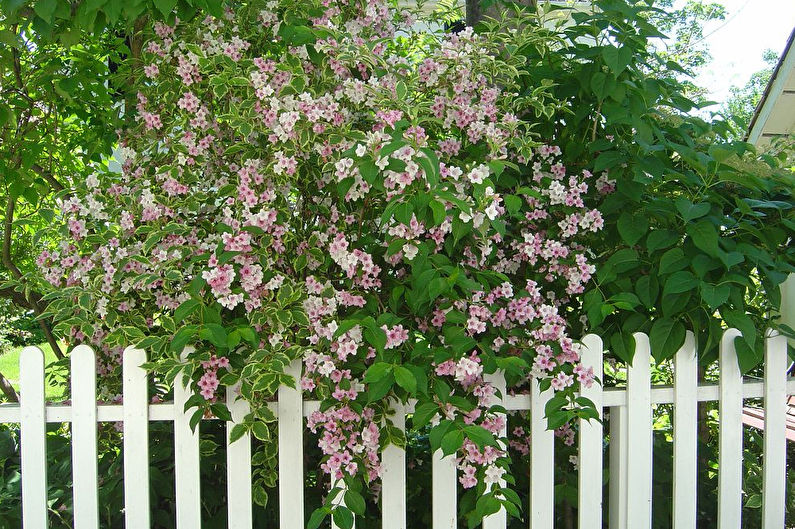
Watering
Watering the weigel is recommended in moderation. It is best to use settled water at room temperature. In the summer, you need to provide more frequent hydration. A layer of mulch around the bush will help prevent drying out of the soil.
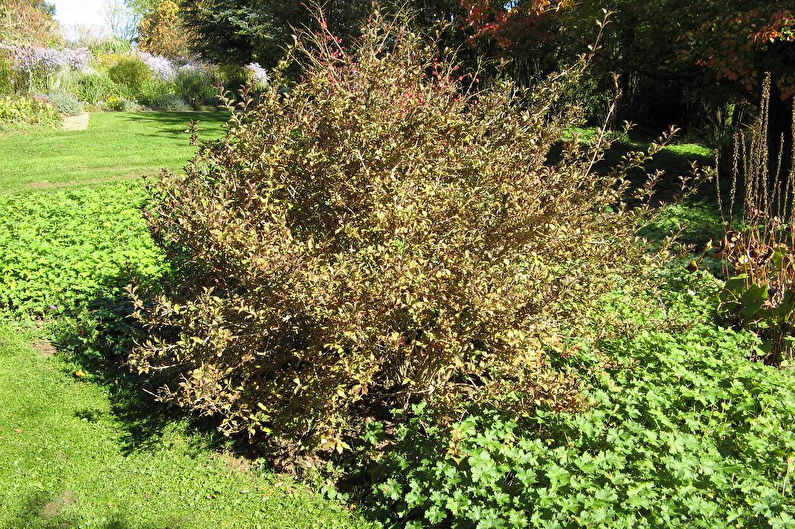
Loosening
Several times a year, the ground under the weigel should be loosened so that air can reach the roots. It will be enough to dig a little bush on the bayonet of a shovel, stepping back from the trunk on all sides by about 2/3 of the crown.
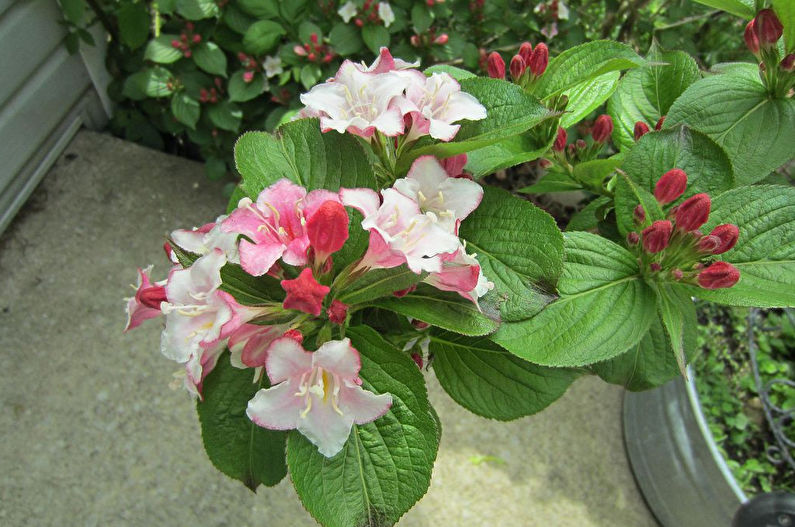
Fertilizers
For active flowering, weigel bushes need trace elements that are not always enough in the soil. Compost and nitrofoski laid during planting will be enough for two years. In the third year in early spring, it is worth bringing a new portion of nutrients to the earth. They should contain potassium, nitrogen and phosphorus. During flowering, fertilizing with superphosphate and potassium sulfate is carried out, and in the autumn, wood ash (200 g / m2) or Kemir fertilizer is mixed into the soil.

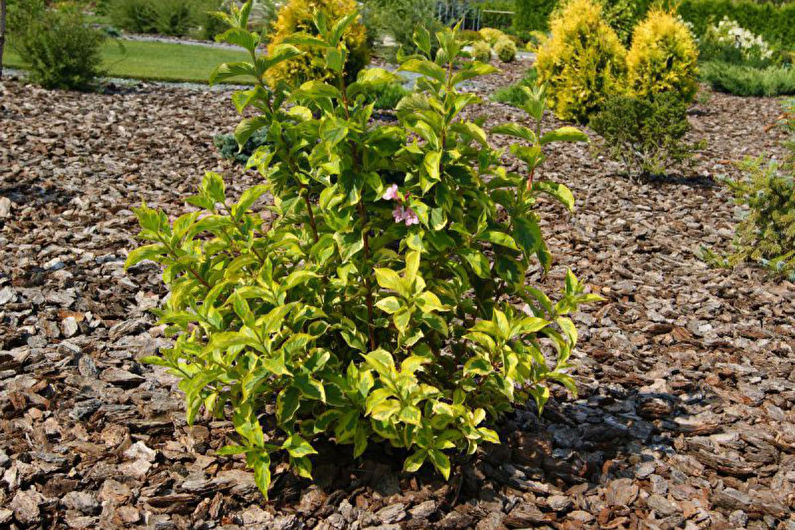
Pruning
A suitable time for cutting weigels is early spring (March - early April). During this period, frozen and dry branches should be removed, and a crown should be formed. Without a kind of preventive “haircut”, the bush will grow, and there will be fewer flowers on it, while pruning will lead to the opposite, positive effect.

Shelter for the winter
The degree of warming of the weigela depends on the region - in the southern climate you can do just hilling the trunk and a good layer of mulch, in the north you will have to look for more reliable options. Some gardeners connect the branches with each other, and then wrap them with hay, straw, needles, rolled insulation, cover with agrofiber or black film. These methods are especially relevant for snowless frosty winters, because the snow itself protects the plants.
It is worth noting that the dying of branches is not as critical for weigela bushes as damage to the roots. They can not be insulated in wet weather. The dried soil at the base of the plants should be loosened, mixed with compost or peat, and be sure to sprinkle with the same mixture a trunks circle.
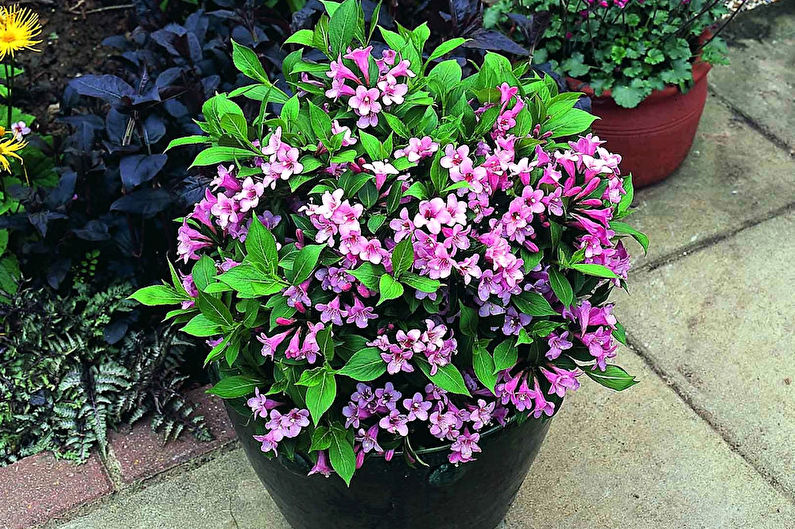
Weigela Reproduction
Weigela propagates in two ways - cuttings and seeds. But, since growing from seeds is extremely long, almost no one is doing this at home.
Cuttings can be carried out in spring or autumn.From the mother plant, green (woody) stems are cut off 10-12 cm long, with a small part of the donor branch. Each of them should have at least three kidneys. The cut sites are treated with a root stimulant, and then the cuttings are planted in seedlings with light sandy soddy soil.
Future seedlings should provide a temperature of + 18-21 and regular watering with warm water. To create a greenhouse effect, the boxes are covered with foil. Under these conditions, the roots on the cuttings appear after about 25 days, and young plants can be planted on the street after 1-2 years.
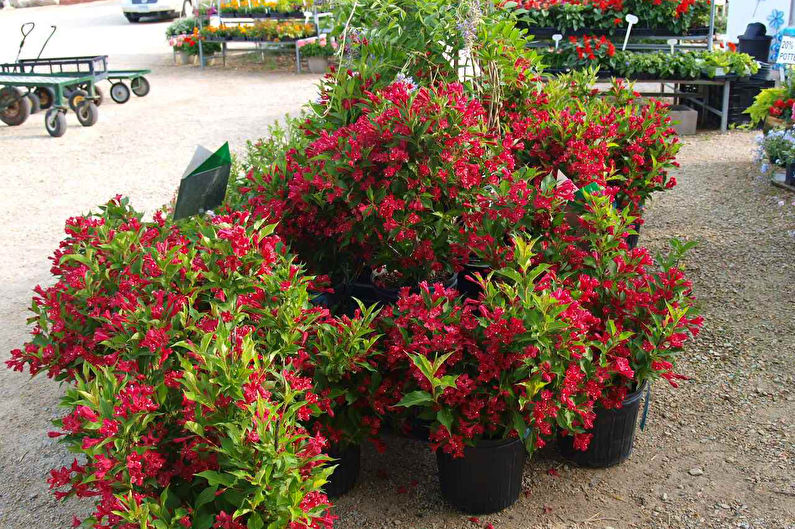
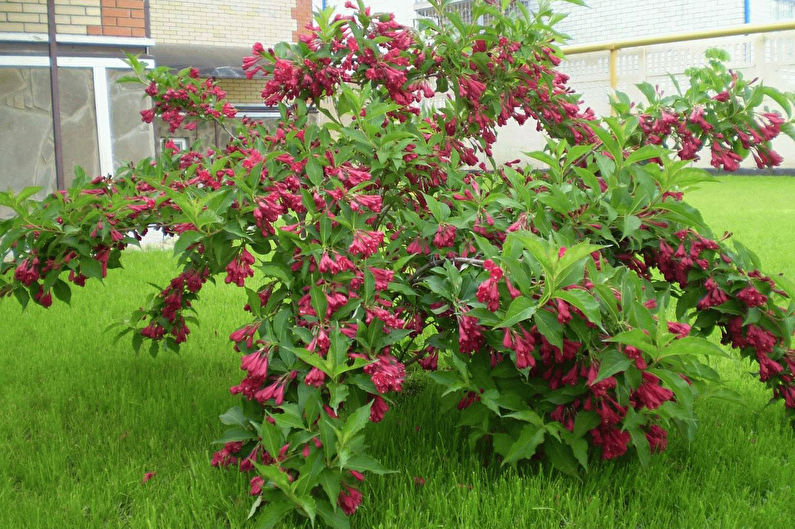
Weigela - photo
Even novice gardeners can plant and grow a weigel, and its touching beauty will take root perfectly in any garden. We have compiled a selection of photos with different varieties, plant colors and options for landscape design.
